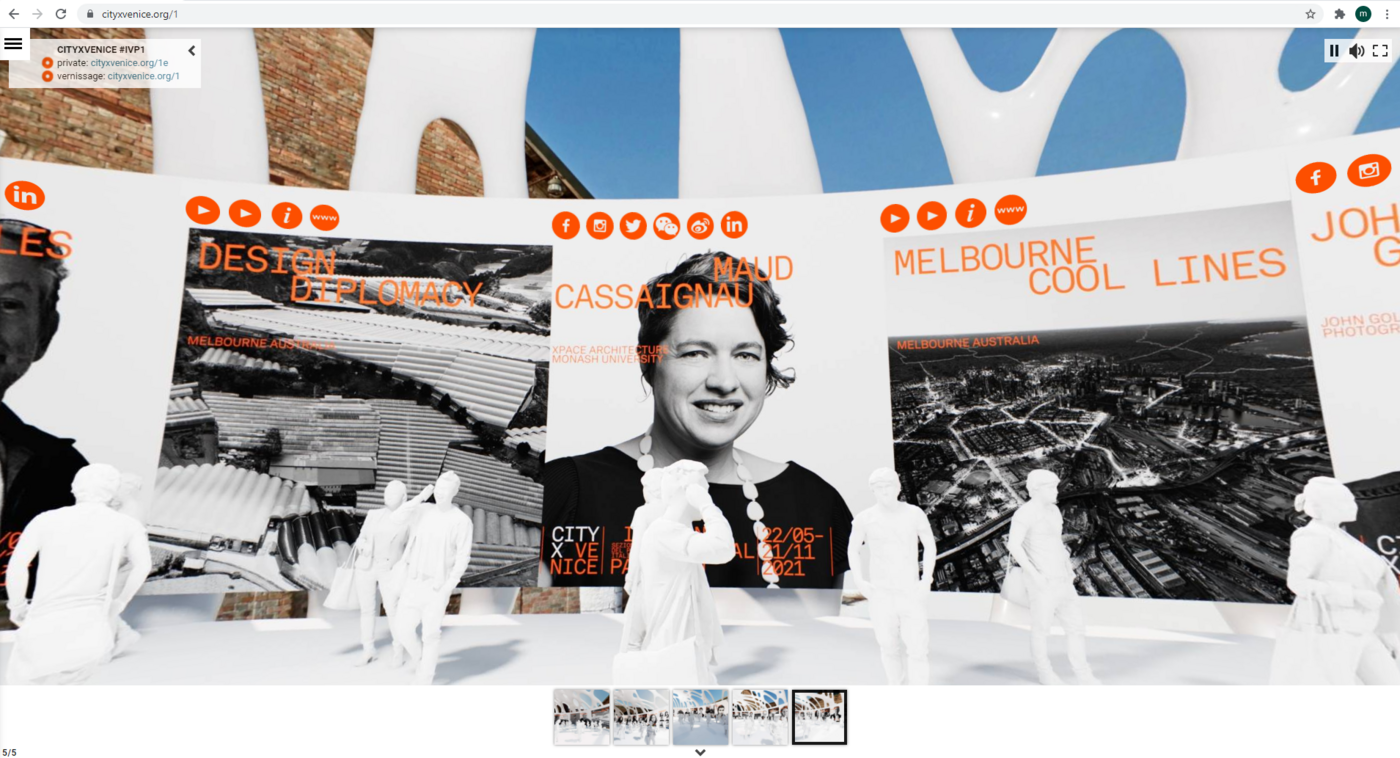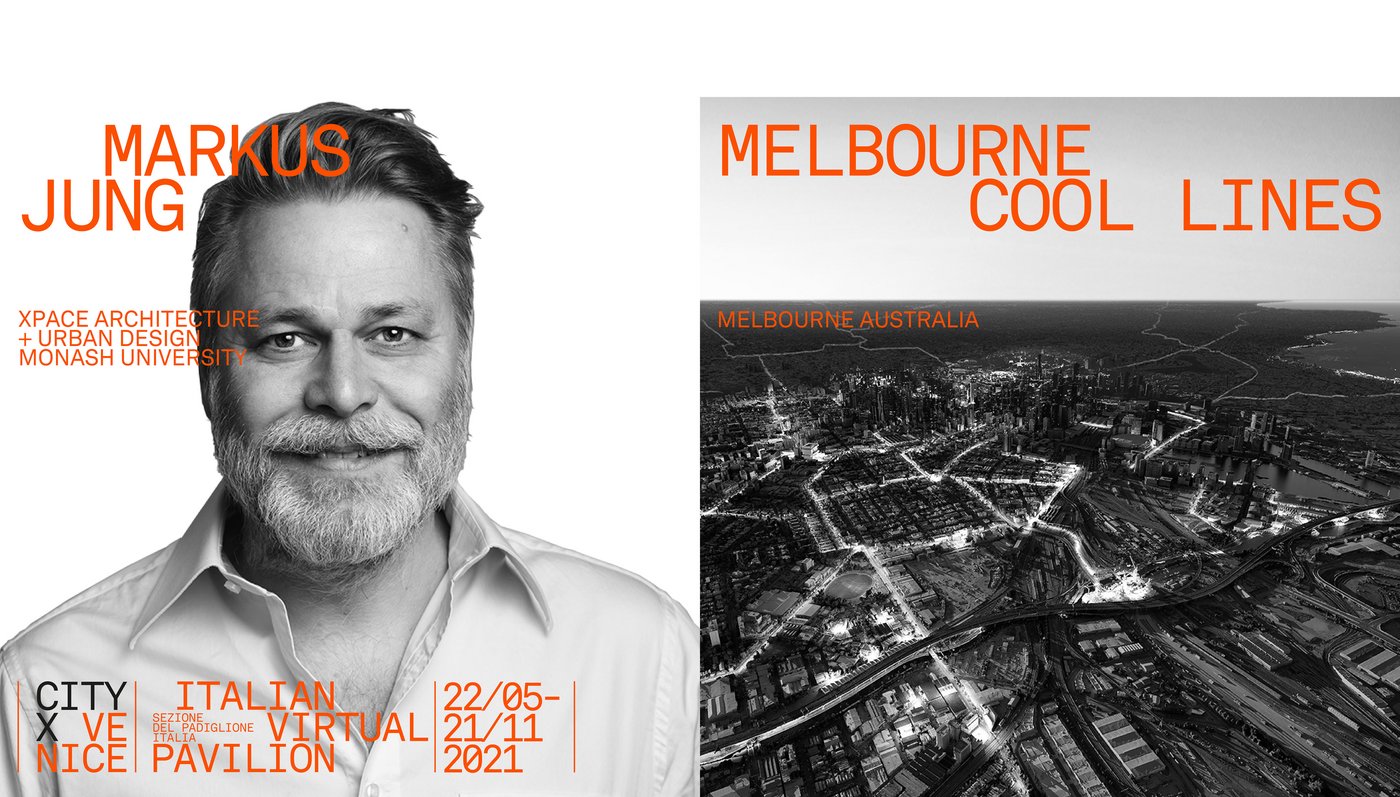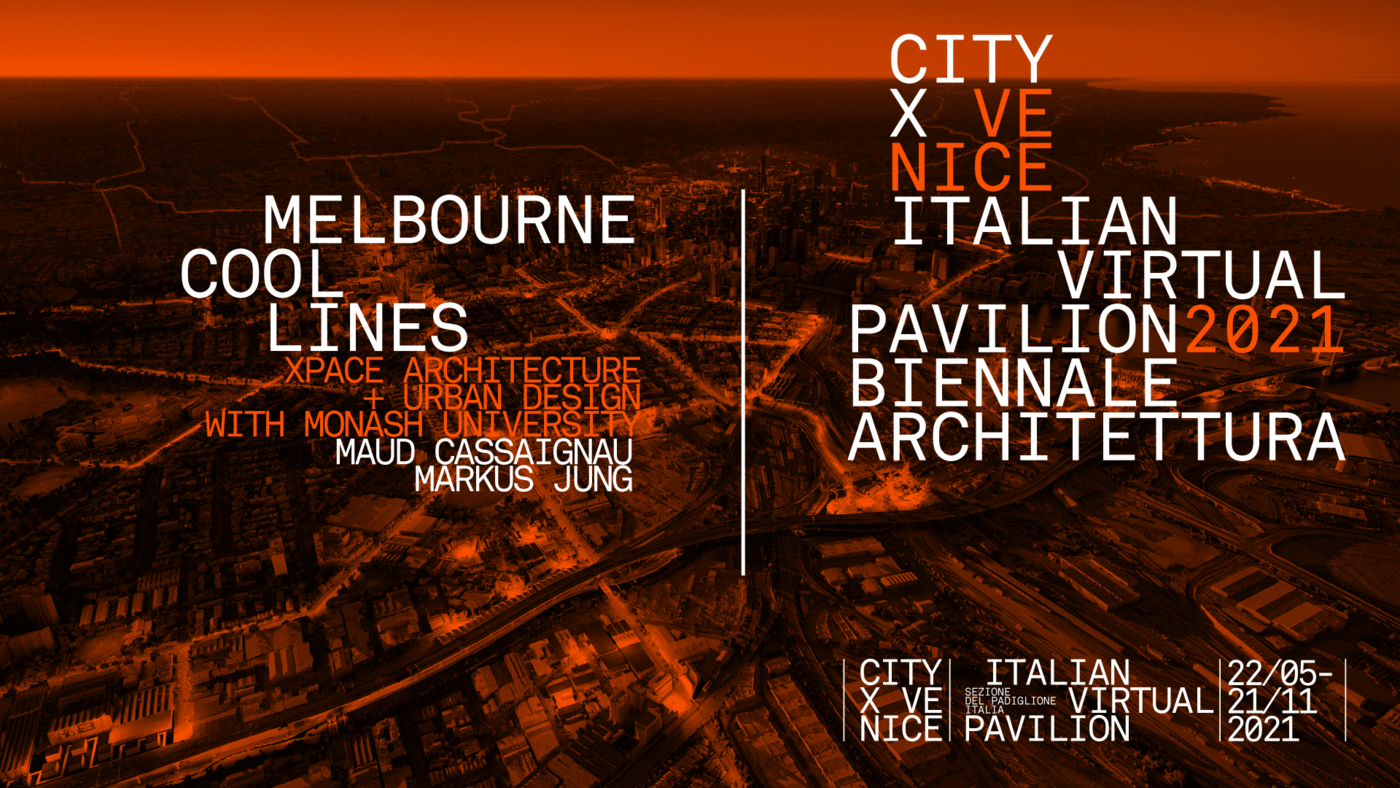| code | la biennale di venezia |
| project | cityx: melbourne cool lines |
| type | project video |
| lenght | 3:15 min |
| directors | maud cassaignau, markus jung |
| video team | chi che goh, george mellos, duy phan |
| project team | perri athanasiou, maud cassaignau, ronald chu, yasarhan demirkol, phan quang duy, markus jung, kristen levey, mingzhu lu, george mellos, brahn smillie-fern, louie smith, maxwell vulcan, jin zhong |
| curators | tom kovac (rmit) + alessandro melis (portsmouth university) |
| organiser | 17th venice architecture biennale |
| theme | 'how will we live together?' curated by hashim sarkis (mit) |
| venue | italian virtual pavilion, sezione del padiglione italia |
| location | www.cityxvenice.org |
| collaborators | monash university, crcwsc, city of melbourne |
| year | 2021 |
| status | exhibited |
Melbourne Cool Lines is a transdisciplinary research project by XPACE urbanists with Monash University, the CRC for Water Sensitive Cities and the City of Melbourne. It responds to climate change in cities through integrated urban design.
Cities of the global south are challenged by intensifying heat waves, flash floods, droughts, and bush fires. Cities are more vulnerable than the countryside. Their sealed surfaces radiate more heat than vegetated areas, described as the urban heat island effect. The intensifying heat impacts human health, limits human activity, especially for vulnerable populations. It also increases stress, hospital admissions, mortality, traffic and pollution. Mitigating the urban heat is therefore an urgency.
Our blueprint project tests ways to address this problem in an industrialised part of Melbourne undergoing development due to new rail projects. Lacking vegetation and shade, this normally dry area occasionally experiences floods. It’s hard surfaces and creek cannot absorb intense rainfalls.
Our approach offers a networked solution. Locally informed catalysts comprising urban, landscaped and climate-responsive typologies reconnect existing green spaces and extend Melbourne’s laneways to form continuous ecological breeze- and pathways. Connecting to the city’s creeks and river, the network progressively extends across the city.
The project comprises following themes: sponge city, healthy city, ecological city, self-sustained city, and productive city.
Sponge City integrates water management into urban landscapes that includes storage, recycling, re-use, adaptation and protection. This project exemplifies how flash floods from a covered-up urban creek can be diverted to offer spaces of respite for surrounding hospital users. Their water greens facades and roofs of an overpass with amenities.
Healthy City focuses on programmes to relieve climate stress. This project reimagines a disused silo as a shaded platform for physical activity. Energy generated by abseilers and climbers recirculates water to mist an artificial rainforest.
Ecological City explores evolving urban ecologies, exemplified in the reintroduction of indigenous flora, fauna, and practices of creating dams to increase biodiversity, and flood protection.
Self-sustained City elevates local food production exploring urban farming through industrialised forms, roof retrofits, and reusing streets for community farming.
Productive City envisions sustainable industries within the city
from producing and testing flood-resistant housing, to employing urban apiculture to pollinate vegetation and farming.
Melbourne Cool Lines envisions the city as a growing ecosystem of projects that can be incrementally implemented. They evolve into a cool civic network prioritising pedestrian and cyclist movement, health and well-being.




